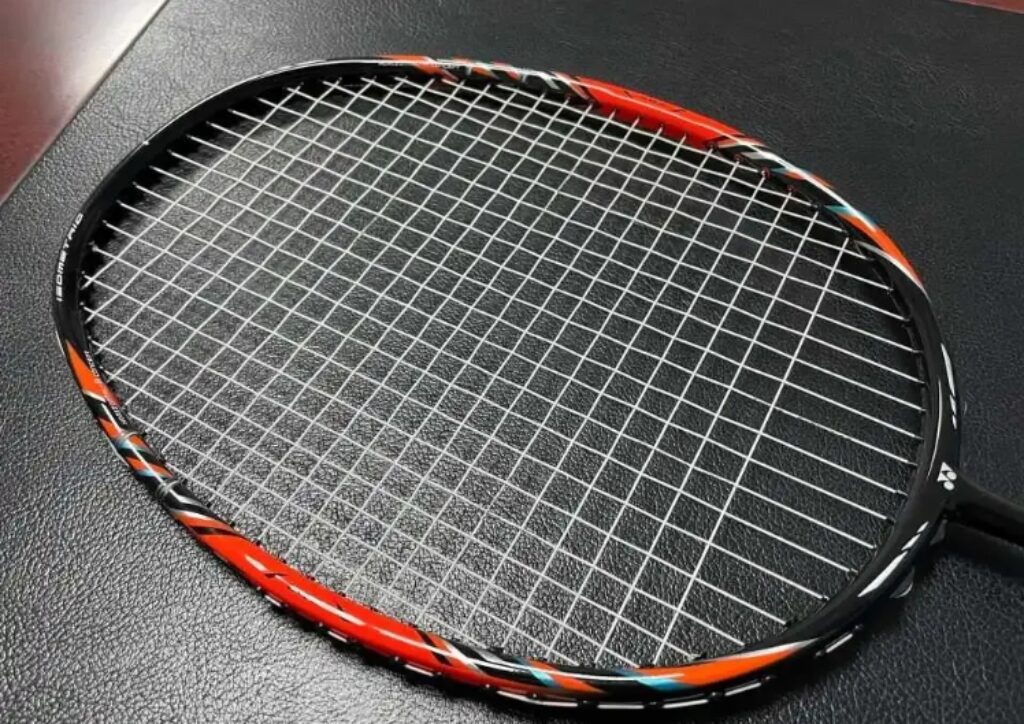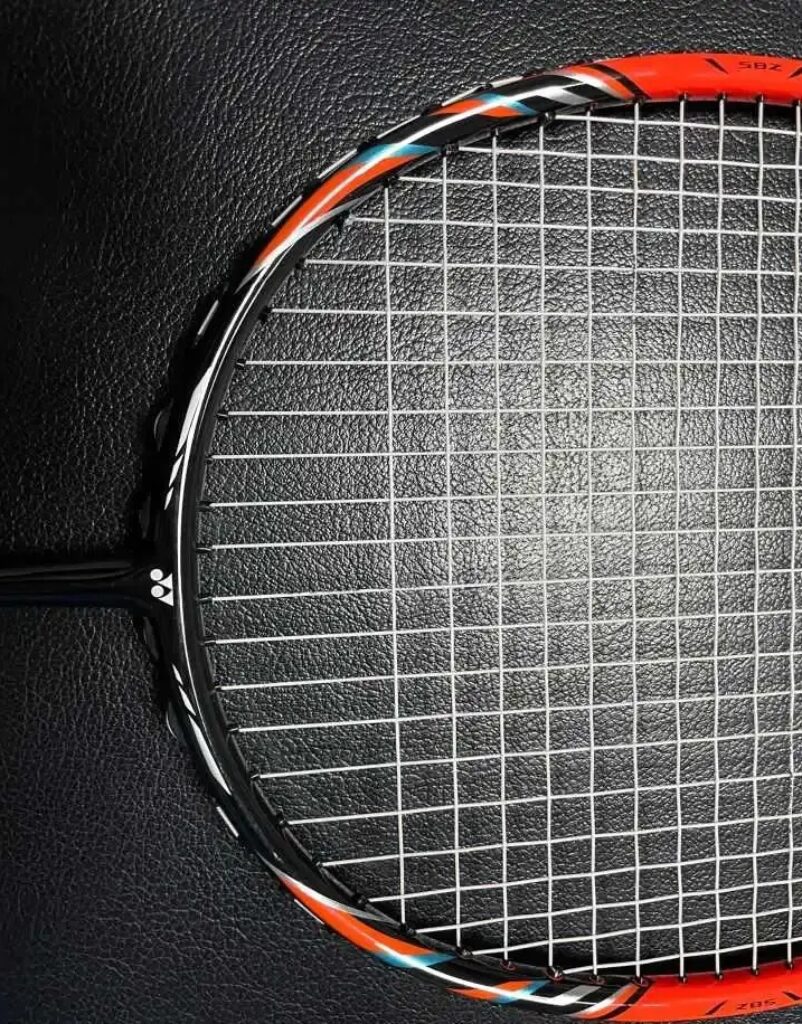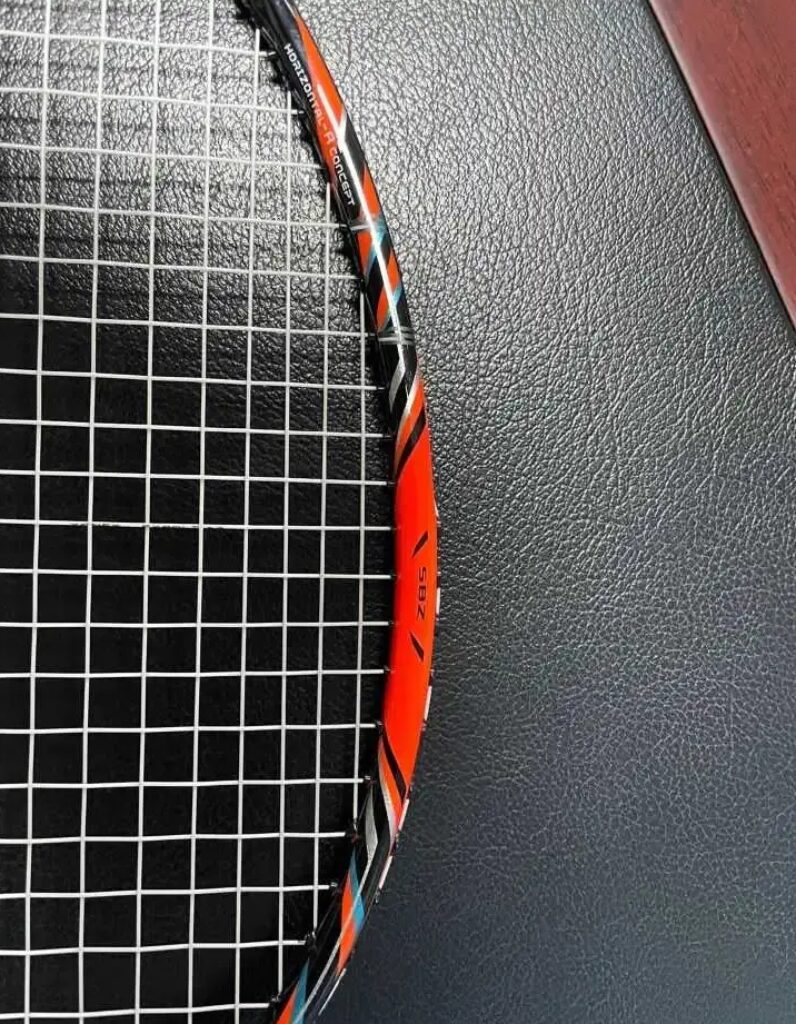Originally, I intended to write about other rackets first, as I’ve recently used several others and have fresh impressions of them. However, upon reflection, I realized I still have 5–7 reviews to finish for borrowed rackets, so I must complete those first.
Unfortunately, as a sugar-coated version of the ZSP, the ISP didn’t leave a deep impression on me during the trial period due to its performance and handling. It’s no surprise that I had to put in some effort while organizing this piece. It’s not the racket’s fault; it’s just that I’ve experienced more extreme versions and have developed a taste for the best.

Specifications: 3UG5, without cap, total weight in use 92.6g, balance point 296mm, shaft length 220mm, medium-hard adjustment, fluid box-shaped small frame, 9-3 o’clock string grooves, warranty 24 pounds, stringing 25–27lbs XB63.
Clearly, this is a youth version of the ZSP, with its appearance and name strongly confirming this view. The ISP, like the old ZSP, uses a red and black color scheme. Except for differences in technological applications and frame pattern details, it’s hard to distinguish the two from a distance. Of course, the missing details make the ISP less impressive and a bit cheaper-looking compared to the ZSP.
However, learning about the technology and downgrades in the ISP helped me reevaluate the ZSP. The visible differences are mainly two and are concentrated in the frame. First, the three horizontal line tubes in the ISP are positioned closer to the center of the frame compared to the ZSP, resulting in a slightly lower density in the upper third of the sweet spot, though the sweet spot area may be larger. Second, the SBZ in the middle of the frame does not use EX-HMG material. The role of SBZ, according to the official website, is to narrow the frame and create a bending point to utilize the elasticity after the frame folds during impact. This second point is particularly eye-opening, as I realized the ZSP/ISP frame indeed has an inward curve at the 9 and 3 o’clock positions.

When I first used the ISP, I had not tried the old-colored ZSP, so I immediately noticed that the new-colored ZSP felt like a relatively light and balanced racket. With a low balance point, its swing speed meets the standard for a speed racket, offering good agility while maintaining a solid feel. During warm-up, I also felt that the ISP had better affinity. As a small-frame racket, it doesn’t require much power, due to its softer adjustment. This softness applies not only to the shaft but also to the frame, as evidenced by the material and warranty poundage. A friend who strings rackets warned me not to use too high tension on this racket, as the ISP frame is relatively soft and high tension poses a greater risk.
Thus, the ISP is currently the most user-friendly small-frame racket I’ve experienced from Y brand, with the lowest barrier to use. For players who have learned the correct swinging technique, handling active shots with the ISP is quite straightforward.

In my view, the reduced barrier also lessens the small-frame racket’s responsive feel. The softer adjustment leads to an unexpected lack of power during aggressive smashes. Despite the good elasticity of the shaft and high string bed tension, the feedback isn’t as excellent as the ZSP/DZS/ZF2. The impact feels somewhat dull, as if an extra layer of gauze is added during power transfer, lacking the clarity of top-tier rackets. This reduces my confidence in powerful and precise shots during doubles backcourt play.
However, as a good product of the NR series, the 3U ISP still delivers excellent consistent offensive performance due to its high swing speed and low swing weight.
Generally, enhanced handling improves control at the net, but the ISP doesn’t have an advantage over the ZSP in rear court or net shots. Compared to the significant drop in tolerance due to the smaller frame, adjustments to the string bed’s sweet spot size only alleviate secondary issues.

About a year ago, this racket was priced at 499. At this price, it’s a cost-effective choice for a mid-range racket with a good shaft, flagship characteristics, and user-friendly handling. Initially less popular, it gained traction due to early reviews, and recently, it’s seen a price increase of around 100 due to the big three’s pricing strategies. At this point, it’s worth reconsidering.
For me, the current ISP doesn’t deliver the excitement as some small-frame rackets from certain second-tier brands or the ZSP, making it hard to excite me further.

Leave a Reply